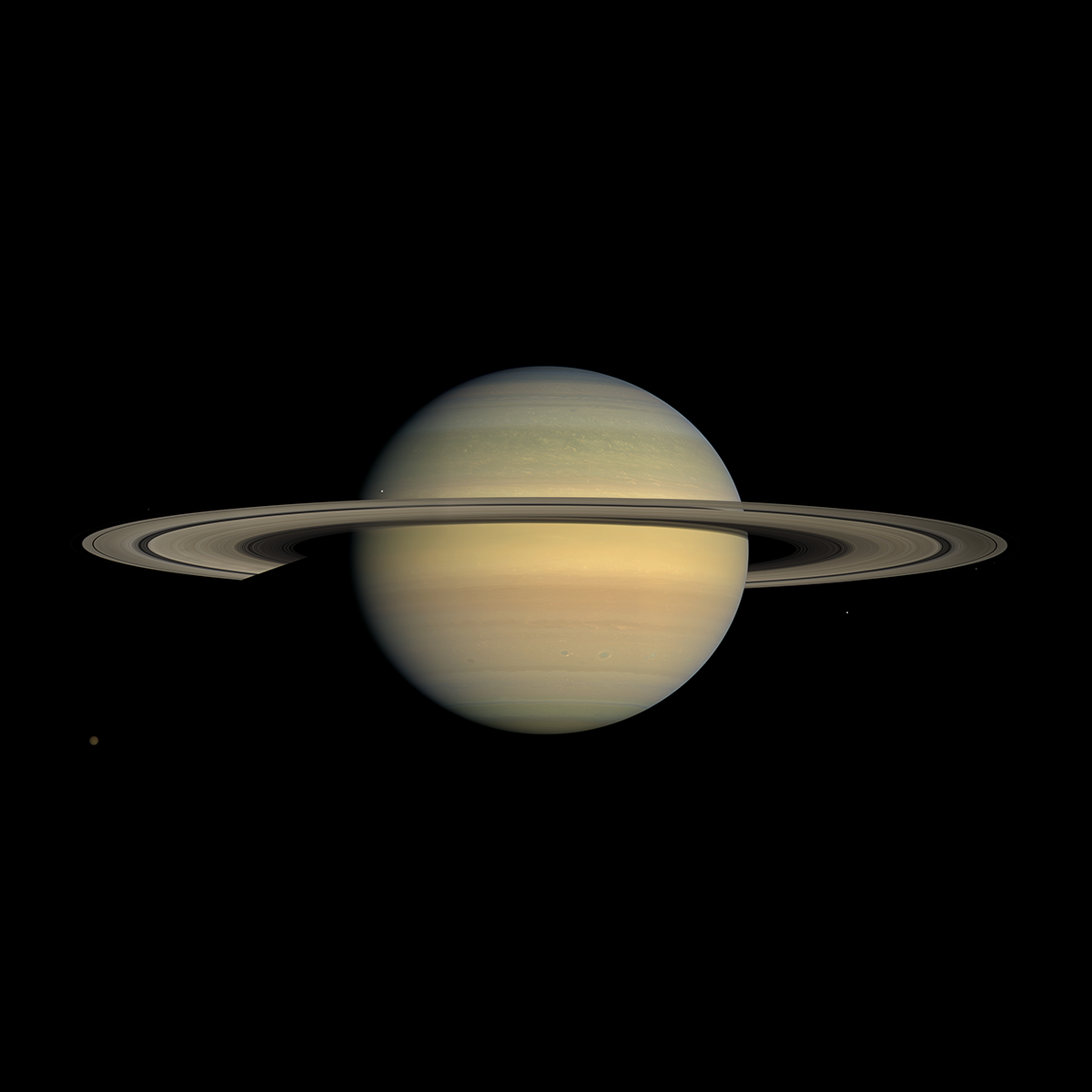Saturn is the sixth planet of our solar system. It is a planet composed mostly of gas, as we are about to see.

Table of Contents
Remarkable data about Saturn:
| Radius | 58,232 km |
| Mass | 5.683 × 10^26 kg |
| Gravity | 10.44 m/s² |
| Distance from Sun | 1.434 billion km |
| Age | 4.503 billion years |
| Orbital period | 29.46 years |
| Natural satellites | 145 Mimas, Enceladus, Tethys, Dione, Rhea, Titan, Hyperion, Iapetus, Phoebe, Janus, Epimetheus, Atlas, Prometheus, Pandora and more |
Key Features of Saturn:
- Gas Giant: Saturn is a gas giant, primarily composed of hydrogen (about 96%) and helium (about 3%), with traces of methane, ammonia, and other gases.
- Low Density: Saturn is the least dense planet in the Solar System, with a density of 0.687 g/cm³, which is less than water. This means that if there were a large enough ocean, Saturn would float.
- Complex Ring System: Saturn’s rings are the most extensive and complex in the Solar System. They are made up of countless small particles, ranging from micrometers to meters in size, composed mostly of ice, with a smaller amount of rocky debris and dust.
- Storms and Great White Spots: Saturn experiences periodic, massive storms called Great White Spots, which are large enough to be seen from Earth. These storms occur roughly every 30 Earth years and are believed to be seasonal weather patterns.
- Strong Magnetic Field: Saturn has a magnetic field that is about 578 times stronger than Earth’s. It is generated by the movement of metallic hydrogen inside the planet.
Saturn Position in the Solar System:
- Orbit: Saturn orbits the Sun at an average distance of about 886 million miles (1.4 billion km), which is roughly nine and a half times the distance between Earth and the Sun.
- Rotation and Tilt: it rotates on its axis once every 10.7 hours, that is why it has an oval shape, as it is flattened in the poles. The planet is tilted at about 26.7 degrees, which is similar to the 23.5 degrees tilt that Earth has.
